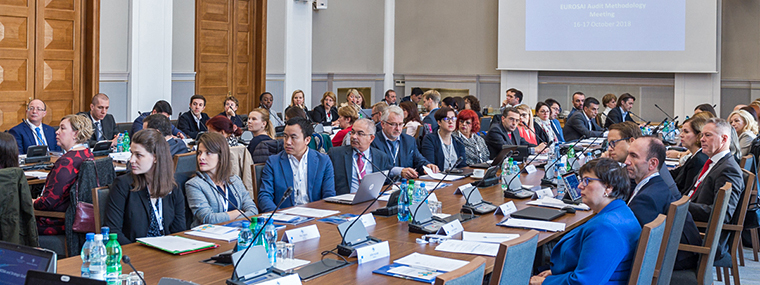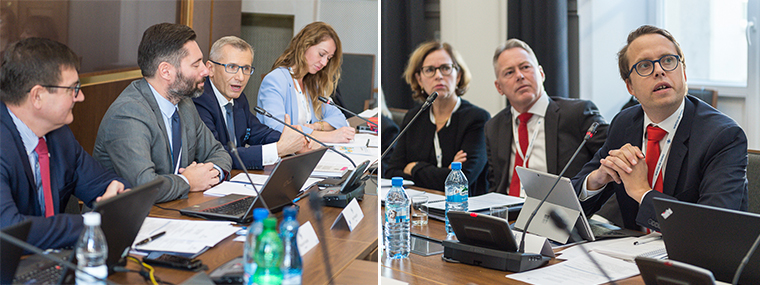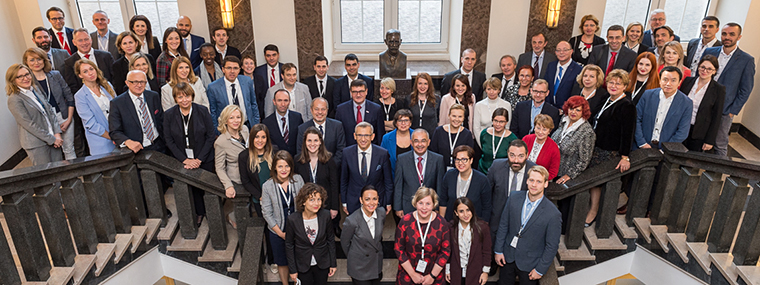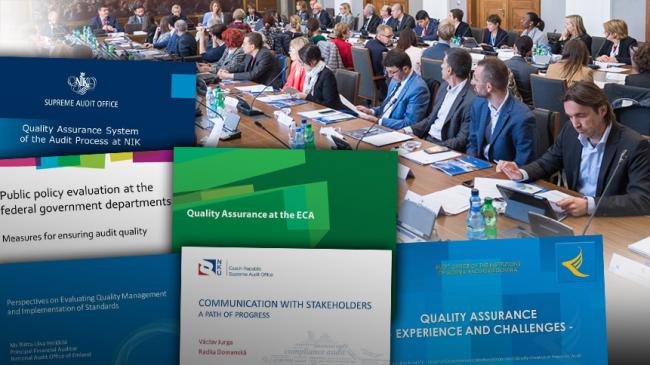Over 60 delegates responsible for methodology, strategic planning, audit quality assurance and stakeholder relations in their Supreme Audit Institutions met in Warsaw. While opening the two-day’s seminar hosted by NIK, President Krzysztof Kwiatkowski underlined the key objective of the meeting which was to specify the SAIs’ current needs in view of the implementation of the second strategic goal of EUROSAI for the years 2017-2023, being the institutional capacity development.
The meeting was divided in three thematic areas:
- quality assurance - ensuring audit quality, including implementation of INTOSAI Standards (so-called ISSAI);
- communication with stakeholders - including modern methods of presenting audit findings and recommendations, such as infographics;
- audit planning at strategic and operational level, with the use of risk analysis.


The meeting involved workshops and panel discussions that were to identify the needs of Europeans SAIs in terms of methodology, planning and communication. The observations made were to help set directions for activities supporting the SAIs in the future.
Since 2017 NIK President Krzysztof Kwiatkowski has been the Second Vice-President of the Governing Board of EUROSAI and the Co-Leader of the strategic goal no.2 ”Institutional capacity development” defined in the Strategic Plan of EUROSAI for the period 2017-2023.
The second strategic goal of EUROSAI is about supporting the Supreme Audit Institutions in their use of new technical capacity, such as promoting e-learning and also facilitating internships, study visits and demand-driven training programmes. NIK has undertaken the task ”Analysis of the EUROSAI members’ needs in terms of their institutional capacity development”. The meeting in Warsaw dealt with the audit methodology.

The IT Audit Active Manual[1] is one of three international projects where the Supreme Audit Office of Poland plays the key role. The other two projects are an internet tool used for writing audit reports of the Supreme Audit Institutions from all around the world (CUBE: egov.nik.gov.pl) and the management control guide (in the pipeline).
The IT Audit Active Manual provides its users with the IT audit knowledge- not in form of a book but as software. It can be used by means of the commercial MSOffice or the free LibreOffice or OpenOffice. An Active Manual user carries out risk analysis based on the review of key areas and risks typical for the IT audit as compared with the data on the auditee. The conducted audits are used to enhance the Manual and boost the quality of future audits.
The CUBE selects the most interesting findings from audit reports and provides access to the browser which enables easy search but also helps structure the knowledge based on the management control terminology. That terminology - being the basis for the operation of the above tools - is the analysis domain of the INTOSAI Subcommittee on Internal Control Standards currently chaired by NIK. The Subcommittee plans to create a set of tools which - in cooperation with the IT Audit Active Manual and the CUBE - are to facilitate the work of auditors and managers.
In the above projects NIK also benefits from its previous experiences from the INTOSAI works on the peer review guidelines (ISSAI 5600) and the IT audit guidelines (ISSAI 5300), which were approved at the INTOSAI Congress in 2016.
[1] Updated version can be downloaded on website of EUROSAI IT Working Group (eurosai-it.org) and the INTOSAI IT Working Group (www.intosaiitaudit.org).








